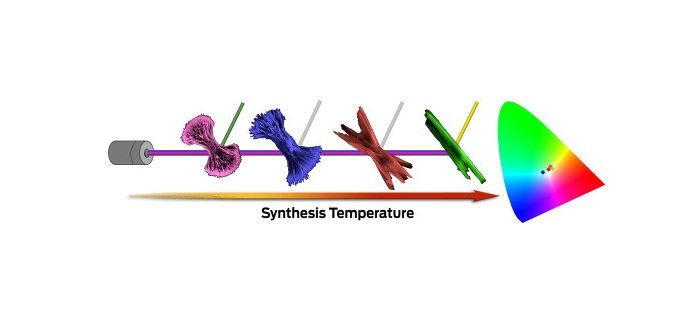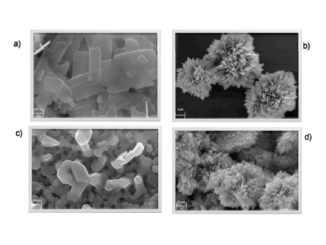
Towards a white-emitting phosphor Ca10V6O25 based material
Abstract: To achieve a stable material capable of white-light emission, we fabricated Ca10V6O25 by both co-precipitation (CP) and microwave-assisted hydrothermal (MAH) methods at different temperatures. The effects of structural disorder at a short-range (Raman spectra), medium-range (UV–vis spectra), and long-range (X-ray diffraction) on the material structure and its effect on optical properties were investigated. Both CP and the MAH methods were efficient for obtaining pure Ca10V6O25 material with different morphologies. Significant changes in morphology and degree of structural order and disorder were found to affect the photoluminescence (PL) properties. All samples exhibited a broadband PL spectrum, characteristic associated to charge transfer processes of the [VO4]3- group, as well as transitions that occurred in the energy levels located within the band gap. The samples obtained by the MAH method at temperatures of 100 °C and 120 °C exhibited a lower structural disorder (at long- and short-ranges), the CIE chromaticity coordinates were located in the white region, MAH100 (x = 0.311 and y = 0.348) and MAH120 (x = 0.350 and y = 0.368). Furthermore, we conducted a detailed study of temperature dependence of PL spectra. All samples displayed decreased luminescence intensity as temperatures increased and low values of activation energy (approximately 2 meV). Finally, the as-synthetized Ca10V6O25 material has interesting properties for possible applications as a white-emitting phosphor under ultraviolet excitation.
Author(s): Teixeira, MM; Gobato, YG; Gracia, L; Silva, LF; Jr, WA; Assis, M; Oliveira, RC; Prando, GA; Andrés, J; Longo, E
Journal of Luminescence
Published: April 2020, Volume 220
DOI: https://doi.org/10.1016/j.jlumin.2019.116990




